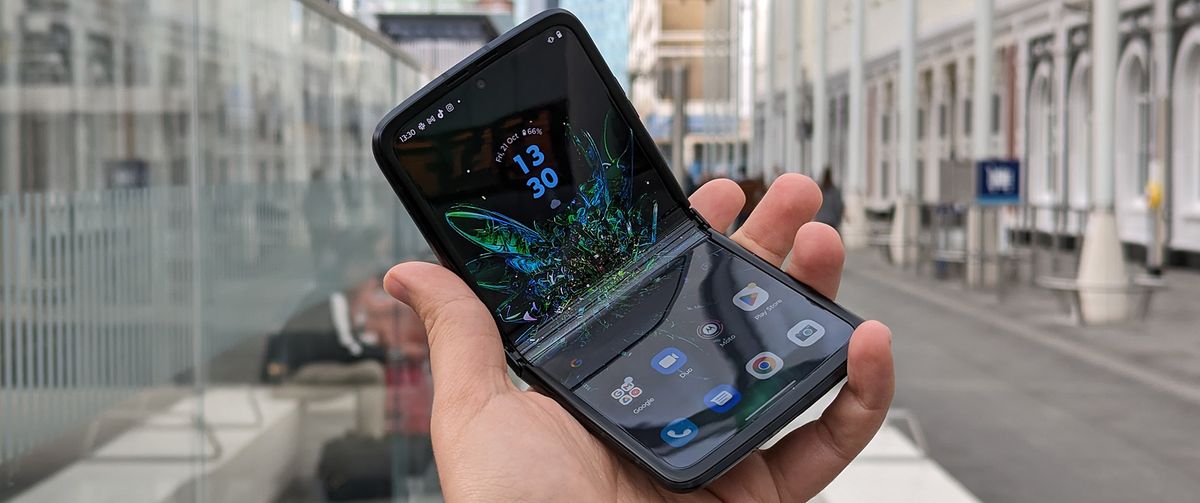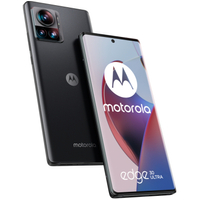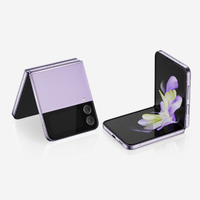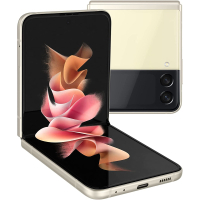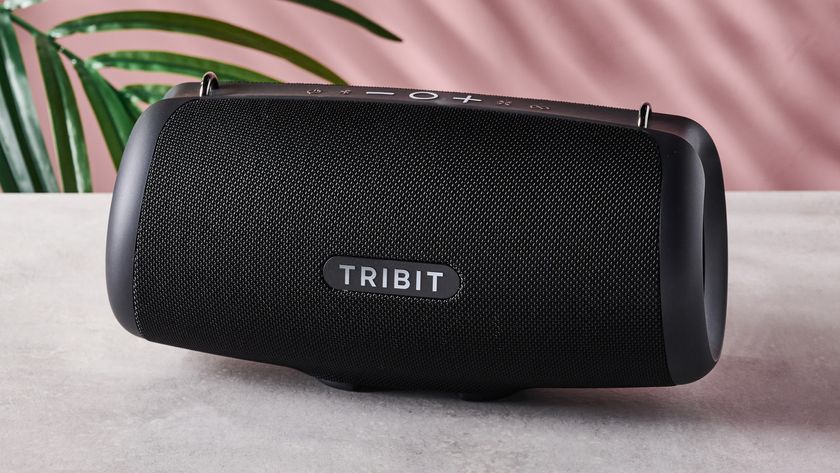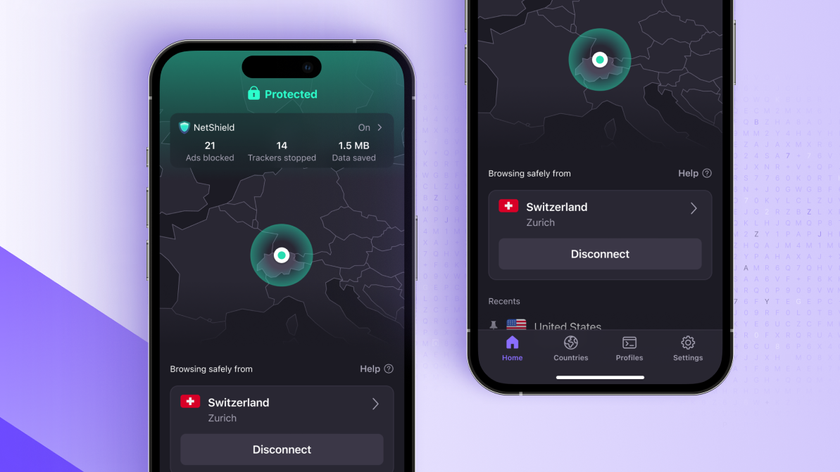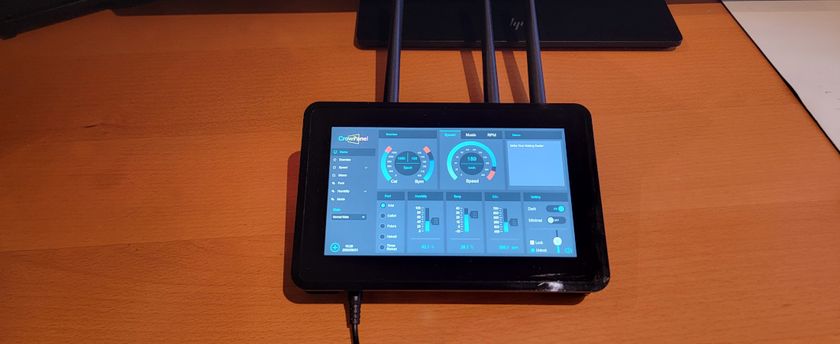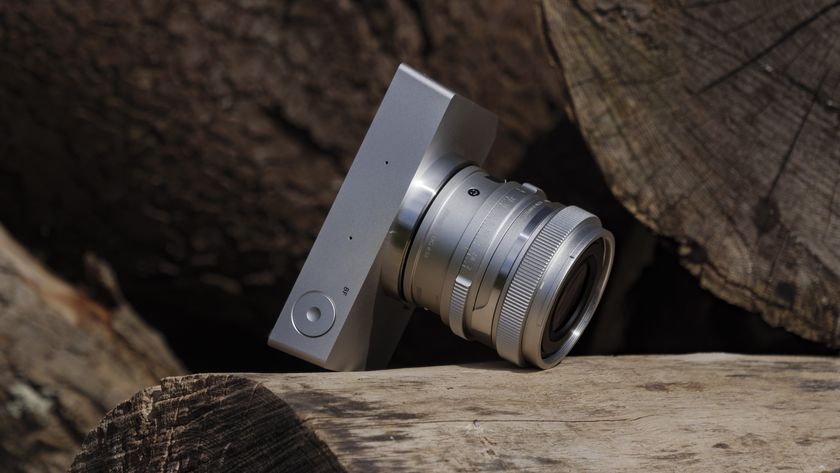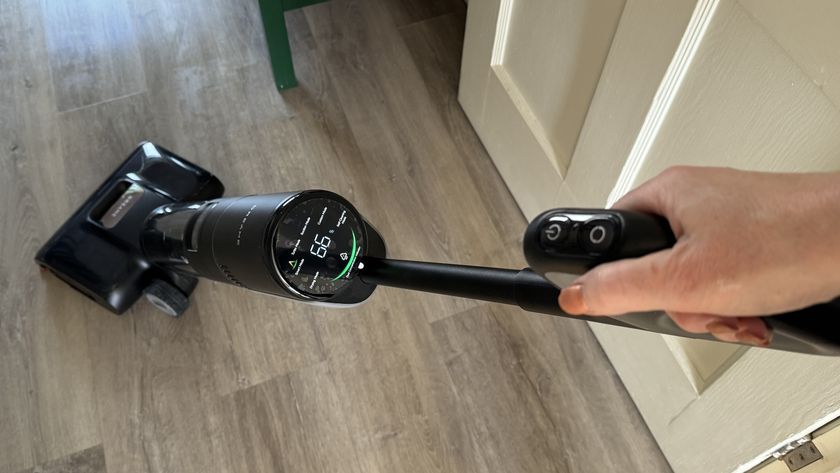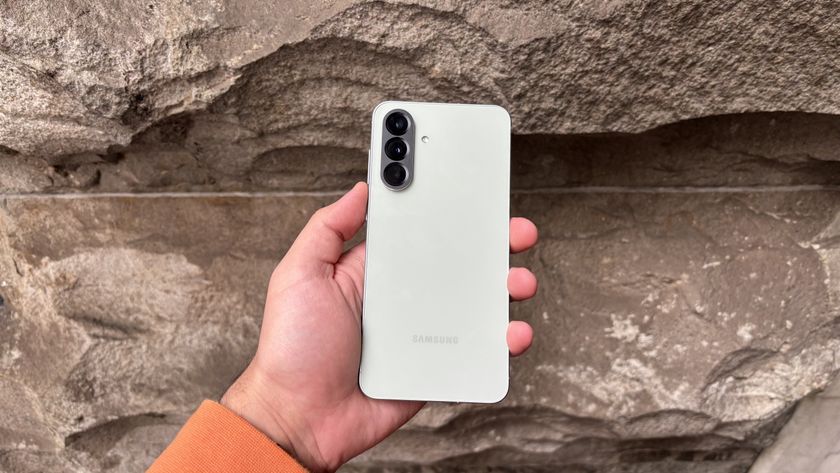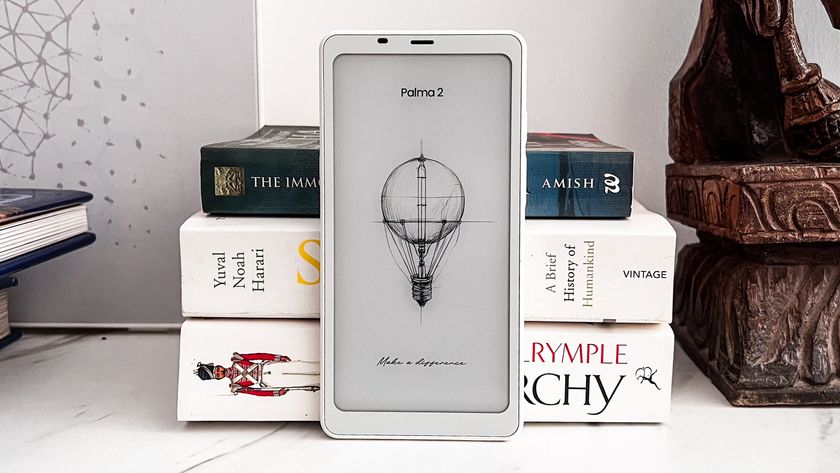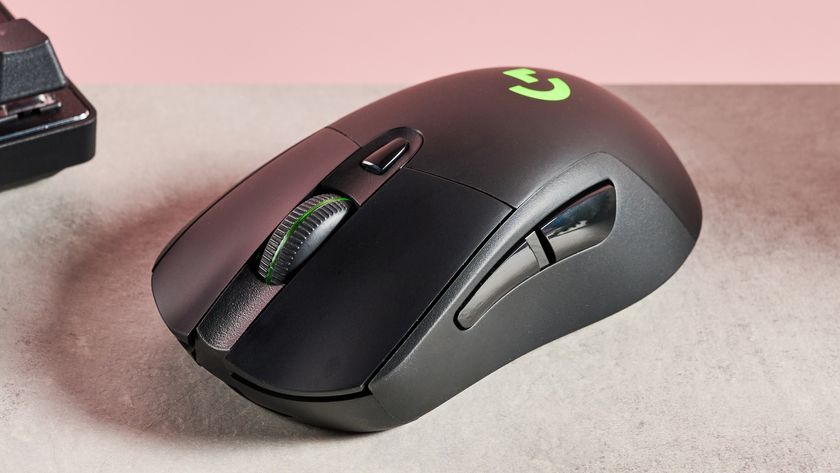TechRadar Verdict
The Motorola Razr 2022 shows that the company recognizes the challenges its predecessors have faced and addresses them all to make a truly worthwhile addition to the series; even if it’s not quite as competitive as its main rival.
Pros
- +
Good battery life & rapid charging
- +
Rich user experience w/ useful features
- +
Barely-there display crease
Cons
- -
Performance and camera jitters
- -
Limited update support
- -
High price
Why you can trust TechRadar
Two-minute review
After a two-year hiatus, Motorola serves up its third-generation foldable Razr. It's a slightly different beast than its predecessors that highlights the company's awareness of – and ability to address – the most prominent pain points of the previous two models; delivering across-the-board hardware improvements while also lowering the price.
There's something of a loss of identity to the Razr 2022's design; ditching the iconic chin of the last two generations in the pursuit of a cleaner and better-proportioned layout. However, not everyone will appreciate the jump in size – driven by the shift from a 6.2-inch display to a much larger 6.7-inch notch-free Full HD+ pOLED panel.
It's great for split-screen multitasking and media – thanks in part to HDR10+, DCI-P3, and 10-bit color support. The switch from plastic to UTG (ultra-thin glass) between generations, paired with the most refined take on the modern Razr series' ingenious teardrop zero-gap folding design, makes for one of the hardest-to-see and feel creases on an inward-folding phone's screen yet.
The display's 144Hz peak refresh rate is also well-suited to gaming, supported by a powerful Snapdragon 8 Plus Gen 1 chip, although the phone stutters unexpectedly from time to time, despite the horsepower available; which could suggest poor optimization. It also comes with 8GB (as tested) or 12GB RAM.
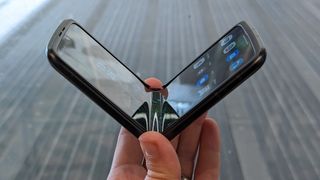
Software-wise, the Razr 2022 arrives on an Android 12-based user experience, which is a little behind the times, as Android 13 is already out in the wild. It's an omission that particularly stings, as, despite the phone's premium feel, Motorola has only committed to a minimum of two years of OS updates (one of which would be Android 13).
The silver lining is that Motorola's typically-clean user experience and well-thought-out assistive features are available in spades, with a particular highlight being Moto Gametime (which is where you can unlock that peak 144Hz refresh rate, while gaming). The breadth of functionality available from the Razr 2022's external Quick View display is impressive too – if a little unpolished – with the same to be said for the new Flex View functionality; which lifts a page right out of Samsung's Galaxy Z series' playbook.
Despite the phone's 3,500mAh battery capacity sounding relatively small compared to a lot of modern flagships, the Razr 2022's longevity surprised in real-world use; making this a far more reliable all-day device than its predecessors. This battery capacity is paired with astoundingly-quick partial charging (usually reaching over 90% charge in the first 30 minutes) from what you'd expect would be more pedestrian 30W speeds. No wireless charging, though.
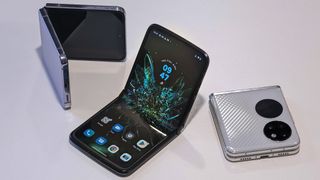
On paper, the camera experience is far more competitive than anything we've seen from previous models; with a secondary ultrawide finally joining what was once a lone primary camera. The Razr gives you big numbers too: a large 50MP wide sensor with OIS (optical image stabilization), twinned with a 13MP ultrawide that doubles as a macro snapper, while the in-display selfie camera uses a 32MP sensor to capture 8MP pixel-binned shots.
With features like 8K video capture, dual capture, and the Razr-exclusive Tripod View, there's a lot of versatility to the camera experience; if only image quality could rise to meet it. The camera system has its moments, but image processing problems, underwhelming low light performance, and inconsistencies in color between the main and ultrawide sensors hold it back from where the photography should be for a device at this level.
As mentioned up top, it's clear that Motorola is taking its efforts in the foldable market more seriously than ever before and the result is the most competitive Razr to date; helped by expanded functionality, improved performance, and a lower price.
If the Samsung Galaxy Z Flip 4, is currently the standard by which other clamshell foldables are measured, the Razr 2022 comes the closest and has equally as broad an appeal (sorry Huawei P50 Pocket). However, a lack of polish, a bulkier design, limited update support and absent features (like wireless charging) hold it back from being at the head of the pack.
It still finds a place on our rundown of best foldables and best Motorola phones, however.
Motorola Razr 2022 price and availability
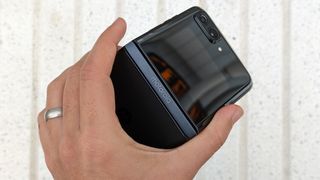
- China launch: August 15. International launch: October 25
- Most affordable Razr foldable to date
- Prices start at £949.99 / €1,199
The Razr 2022 stumbled out the gate, with its original Chinese debut scheduled for August 2 but being canceled at the eleventh hour. Two weeks later, on August 15, the company managed to bring its newest foldable to market.
Just over two months on and the Motorola Razr 2022 has finally gone international; arriving on October 25 and available in Europe on the same day, with release dates for markets – including the UK – set to be confirmed in due course.
Perhaps the most exciting aspect of the third-generation foldable Razr's release is its price. The price-performance balance of the previous two generations made them niche purchases for die-hard fans of the brand and collectors. For 2022's iteration, however, Motorola has managed to push the price of its new folding phone down to its lowest yet, despite improvements in what's on offer across the board.
Pricing, at present, is confirmed as starting at £949.99 / €1,199, so hovering around the same price as its most like-minded competition, Samsung's Galaxy Z Flip 4 (which starts at $999.99 / £999 / AU$1,499). For your money, however, you do also get a dedicated hard case and a 30W TurboPower fast charger.
- 8GB RAM + 128GB = TBC
- 8GB RAM + 256GB = $TBC / £949.99 / AU$TBC
- 12GB RAM + 512GB = TBC
We'll update this review with US, UK and Australian availability and additional pricing once we learn more.
Value score: 4/5
Motorola Razr 2022 design



- Notably larger compared to previous Razr
- IP52-certified dust and water resistance
- Tactile hinge and side buttons
- Two-tone Satin Black finish
If you came into contact with either previous foldable Razr, the most immediate difference is the larger size of this new model, brought about by a 0.5-inch increase to the display.
While there is a one-handed mode built into the user experience, it doesn't scale the UI down but instead simply pulls down what's on-screen to the halfway point, to bring elements at the top within reach. Even though this is useful, the phone's width means it's still cumbersome to use one-handed. However, flipping the Razr shut presents its secondary Quick View display, which lets you get a lot done and – despite the added thickness – is easier to manipulate by comparison; more on that later, though.
You can pick up the Razr 2022 in any color, as long as it's black; Satin Black to be exact. In truth, it's actually a very attractive two-tone finish, with the top half of the phone's back rendered in glossy black glass, while the lower half is lightly textured black 'velvet AG glass', all supported by a black metal frame.
The AG glass is brilliant at repelling fingerprints while the polished glass absolutely isn't; the opposite is true of these surface finishes when it comes to grip though. As such, you'll likely hold the phone around its mid-point for a more stable grasp.
Although the tolerances on elements like the hinge don't seem anywhere near as tight on the Razr 2022 when compared to the Z Flip 4, Motorola has finally managed to give its foldable some degree of water and dust resistance, with IP52-certification adding peace of mind to the phone's intricate folding mechanism.
Speaking of which, this generation of Razr bids farewell to the iconic chin of its forebears, in order to keep the dimensions compact and the design more balanced; in spite of the overall size increase. In one sense, this change makes the Razr feel a little more generic than before, but the practical upsides are hard to argue with.
Even though after just a week of opening and closing, a small amount of give could be felt in any position but fully open, the Razr seems well made and sturdy. You can feel the mechanisms in the hinge as you open it and that adds a level of satisfying tactility that you won't on every foldable.
A nod also needs to go to the independent volume buttons and power key on the phone's right side. They sit, perhaps, a little too high when the phone's open, but adopt a satisfying 'click' when pushed, not to mention the embedded fingerprint sensor is impressively responsive.
Design score: 4/5
Motorola Razr 2022 display
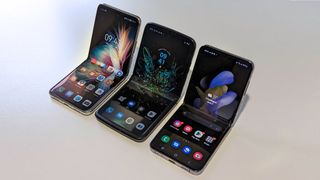
- 6.7-inch 144Hz Full HD+ folding pOLED w/ HDR10+, DCI-P3, 10-bit color
- 2.7-inch AMOLED external Quick View display
- Minimal crease in folding display
- UTG (ultra-thin glass), no notch
That third-generation hinge allows the Razr 2022 to close completely (i.e. without a small gap, as on Samsung's Z series) while folding the screen's mid-point into a teardrop shape with a 3.3mm radius. This reduces stress on what is now UTG (ultra-thin glass), an upgrade from the solely plastic display on last year's model.
Motorola's approach to a folding display was always impressive – using a system of moving plates to support the screen when the phone is opened flat – and the result with this generation is, to date, one of the least-visible creases on an inward-folding phone screen. It's barely noticeable under-finger too; one area where rivals should take note.
Beyond the practical prowess of the Razr's main screen, it's also technically-endowed, with HDR10+, DCI-P3 gamut, and 10-bit color support, along with an impressive 144Hz peak refresh rate. I say 'peak', as the main display settings menu only gives you the option of 'Auto' or '60Hz', which in testing means that, most of the phone's interface is viewed at 120Hz, dipping to 90Hz or 60Hz, where appropriate.

The smoothest visuals are reserved for gaming, with the ability to enable 144Hz within the pre-installed Moto Gametime app. It, along with a number of other useful features, lets you set the refresh rate from 'follow system' (which defaults to 60Hz), to a dedicated 60Hz, 90Hz, 120Hz, or 144Hz, as you desire. You also have the ability to increase the touch response rate within Gametime on a game-by-game basis, which is all rather impressive.
As with practically all modern foldables (aside from the distinct outward-folding Huawei Mate Xs 2), the Razr 2022 has a second screen, which Motorola calls the Quick View display: a 2.7-inch 60Hz OLED panel on the outside face of the phone. While the pixel count differs slightly from the previous Razr, it's still unquestionably the largest external display on a clamshell foldable and a powerful addition (which I'll talk more about in the next section).
Display score: 4.5/5
Motorola Razr 2022 software
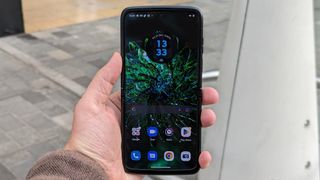
- Android 12 w/ My UX
- Flex View optimizations for folding form factor
- Only two years of OS updates, three years of security updates
Sticking with the Quick View display, the sheer size of the screen means you can do a lot more with it compared to the external screens on the Z Flip 4 or P50 Pocket, and that's helped by the fact that Motorola plays pretty fast and loose with the software support.
Unlike rival phones that only offer first-party widgets for things like the weather, calendar, and notifications (all of which also feature on the Razr's Quick View display), Motorola lets you try and use almost any app installed on your phone on that external screen.
Although it's large for an external display, 2.7-inches is pretty small for most apps, which are designed to operate on significantly larger and taller screens. As such, expect mixed results when trying to use the likes of Instagram and Disney Plus, but know that if you need to triage a Tweet storm, control your smart devices via Google Home, or want to watch TechRadar's exceptional YouTube channel without opening the Razr up, you can chase your bliss.
Motorola has unquestionably cribbed from the Z Flip 4's playbook with the phone's new Flex View functionality; made possible by the move to UTG instead of plastic on the display. That and the fact that the hinge can now hold itself at varying angles through its full range of motion.
You can leave it partially closed and glance at the clock, as well as your notifications on the Quick View display or open it just past 90 degrees and enable split-screen multitasking with a quick right-left swipe gesture to simultaneously run two apps at two angles on the main screen.
Like the external display experience, the polish of the software doesn't quite match that of its rival, the Z Flip 4, but it's still an improvement that better capitalizes on the Razr 2022's folding form factor in a way that its predecessors physically couldn't.
As for the wider user experience, Motorola's characteristically clean user experience is underpinned by Android 12 out-the-box and not the currently-available Android 13, which is a bit of a shame.
While Motorola has (smartly) tried to push updates to its unique software additions through the Play Store – instead of having them tied to major OS updates – there are still some underlying benefits to having extended software support through new OS releases; an area that Motorola typically falls short on.
With Android 13 being only one of two generations of promised OS updates, paired with three years of Android security updates, the Razr 2022 falls behind the likes of Google's Pixel phones (three and five years, respectively) and Samsung's latest phones (four and five years, respectively), which is a shame, particularly when you consider the Razr's high asking price.
Updates aside, the user experience offered up by My UX on the Razr is generally very approachable, with a near-stock home screen, notification shade, app drawer layouts, and behavior. Most of the extra Motorola-specific additions can be managed from within the Moto app, which comes pre-installed.
Peek Display makes lock screen notifications richer and gives you more control from the outset, gestures let you do various things, like quickly turn the flashlight on or off with a shake, and inclusions like Power Touch offer quick access to your favorite apps from anywhere, with a gentle double-tap on the power key.
Software score: 4/5
Motorola Razr 2022 performance and specs
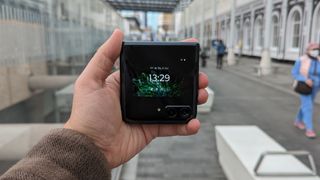
- Snapdragon 8 Plus Gen 1 chipset
- 8GB / 12GB LPDDR5 RAM (market dependant)
- 128GB / 256GB / 512GB UFS 3.1 storage (market dependant)
Anyone familiar with the last two generations of Razr knows that the phones' price/performance balance was completely out of whack, compared to equivalent conventionally-shaped handsets, but there was valid reasoning for this.
Their combination of high price tags and mid-range processors was born out of the company's desire the break into the foldable phone space early and that required money to invest in research and development. It's money they's hope to collect, to some degree, through the phones' premium retail price.
Reinvesting that money has helped Motorola make innovations they engineered for the Razr 2019 progressively more affordable, and with this year's Razr 2022, the company has finally been able to create a phone with a bespoke hinge system, teardrop display, and top-tier chipset fitting of its price and status with Motorola's wider phone portfolio.
Qualcomm's latest and greatest Snapdragon 8 Plus Gen 1 chip runs the show, twinned with speedy LPDDR5 memory and UFS 3.1 storage. In most markets outside of China, the Razr 2022 will come with 8GB of RAM and 256GB of storage (as tested in this review), but depending on where you are, you might encounter the 128GB storage build or the top-tier 12GB RAM / 512GB storage variant.
Benchmarking serves up expectedly top-tier results, with a Geekbench 5 score of 4078 (for comparison, the Z Flip 4 scored a similar multi-core score of 4005), but real-world performance is, for the most part, as top-shelf as you'd hope and expect.
The only caveat is that, in spite of that top-tier chip and high refresh rate main display, you will occasionally run into jumps and stutters that can carry through to gaming and are even more apparent when using the external Quick View display.
The issue certainly doesn't seem to be driven by a lack of resources; this is the first Razr that feels like its running on the right level of chip to complement its innovative, premium form factor. That means, though, the issue lies instead with a lack of optimization within Motorola's software experience.
It's certainly a treatable problem and one that Motorola will hopefully address promptly, now that the phone is on sale.
Performance score: 4/5
Motorola Razr 2022 battery life
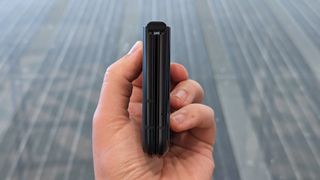
- 3,500mAh battery (up from 2,800mAh on Razr 2020)
- Surprisingly quick 30W wired charging
- No wireless charging
Relative to conventional smartphones with similar screen sizes, clamshell foldables always have to make do with smaller batteries; simply because there's just less interior space to work with.
In the case of the Razr 2022, moving to a larger display means a bigger overall footprint compared to its predecessor, which in turn means room for a significantly larger battery. Although not huge, even by its rivals' standards, the 3,500mAh cell inside this Razr is a welcome generational upgrade that, in real-world testing, surpassed expectations.
Even with two screens to power and the odd spat of gaming, on top of general usage – which included streaming music and video, browsing the web and social media, and camera use – the Razr 2022 delivered between six and seven hours of screen-on time per charge.
For a little added context, a 15-minute round of Apex Legends Mobile in performance mode, with 144Hz refresh rate mode on and increased touch-response enabled, at 50% brightness, sapped 5% battery.
The surprises didn't stop there, with regards to the Razr 2022's battery experience, with the seemingly innocuous 30W wired charging (double that of the previous Razr) proving incredibly capable.
Over multiple rounds of testing, the Razr makes a sprint to surpass 90% charge in the first 30 minutes after being plugged in, spending the rest of an hour casually creeping up to 100%. As a result, for those that care about preserving battery health, you'll seldom need to recharge the Razr 2022 for more than 30 minutes at a time and still have plenty of power to get you through the day.
The one fly in the ointment here is a complete lack of wireless charging, which the Galaxy Z Flip 4 flaunts alongside reverse wireless charging, and as with extended gaming and camera use, the Razr 2022 does also get a little warm while charging, but not to sinister levels.
Battery score: 4/5
Motorola Razr 2022 cameras
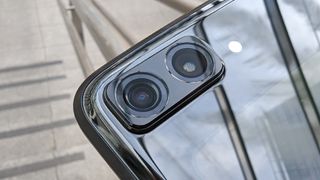
- 50MP primary + 13MP ultrawide rear cameras
- 32MP hole-punch selfie camera
- Up to 8K video recording + Tripod View mode
Alongside underwhelming chipsets, the previous Razrs also only gave you one rear camera to work with and one front-facing camera. With this third generation, not only has Motorola found room for an additional ultrawide but it's also been able to ditch the notch on the display and turn the selfie snapper into a high-resolution hole-punch offering, instead.
There are also much larger numbers being thrown around for this generation, with a 50MP primary sensor that can leverage sizeable 2.0μm pixels, for improved low light performance (plus OIS), that new 13MP ultrawide, with its 120-degree FoV, and support for a dedicated macro shooting mode, and a 32MP front camera that captures pixel-binned 8MP snaps.
The camera insisted on trying to remove my nostrils
Motorola also throws in the ability to apply video filters across select third-party video calling apps, shoot creatively with Spot Color (and other similar modes), and record video at up to 8K resolution.
The Quick View display can also be called into action, grabbing a subject's attention by showing a cartoony face on the outside while you're using the viewfinder on the main display, letting you snap portrait selfies while the phone is closed, by way of the primary 50MP sensor, and in Tripod View mode, where you partially fold the Razr and place it on a flat surface to grab a snap without the need for a stand or mount.
While that's all well and good, the results that come out of the Razr don't quite match up with Motorola's promise of 'the most advanced camera seen in a flip phone'.
Camera samples
























The worst offender is the post-processing, particularly on selfies and portrait shots, where – even after repeated attempts, over multiple days, and in multiple different environments – the camera insisted on trying to remove my nostrils, as if it saw them as gaping pores or something. It's also, by default, just very heavy-handed on skin.
There's also a glaring inconsistency between the main and the ultrawide, and while image quality and dynamic range usually take a dive when comparing primary and secondary sensors, the effect on the Razr 2022 is particularly pronounced, not helped by significantly different white balancing.
Even with the power of those large pixels, 12.6MP binned images that come from the main 50Mp sensor colors appear muted, the dynamic range feels too narrow, and fine details don't hold up well under scrutiny. Plus, there's painfully pregnant shutter lag, something I haven't experienced from a flagship in a long time.
Don't get me wrong, you can take a nice photo in a naturally well-lit environment and if you're after photos that have that distinct HDR (high dynamic range) 'look', then this phone's camera can provide that, but things can go awry all too easily, and low light performance is far below what I was hoping for.
Motorola might be able to improve the main camera through software updates, but I suspect the secondary sensor (and the macro mode that it facilitates) might be beyond saving.
Cameras score: 3/5
Motorola Razr 2022 score card
| Attributes | Notes | Rating |
|---|---|---|
| Design | A bigger beast than previous Razrs with nice refinements | 4/5 |
| Display | A capable, expansive 144Hz display that folds with a barely-there crease | 4.5/5 |
| Software | Fully-featured and easy-to-use but limited OS update support is lacking | 4/5 |
| Performance | Finally, the power the Razr deserves, only held back by optimization quirks | 4/5 |
| Battery | Surprisingly good longevity and fast charging but no wireless charging | 4/5 |
| Cameras | Improved hardware let down by a lack of optimization and inconsistencies | 3/5 |
| Value | Still pricey but the best value Razr to date by far and a worthy Z Flip 4 rival | 4/5 |
Should I buy the Motorola Razr 2022?
Buy it if...
You want a foldable that's good for gaming
The Razr 2022's pairing of a top-tier chip, fast, responsive display and useful software augments in Moto Gametime make it a great foldable for gaming.
You want a compact big-screen phone
6.7-inches is on the larger side – when it comes to smartphone displays – so being able to fold that sized screen in half an slip it in your pocket is pretty handy.
You hate the crease
Manufacturers have been working hard to eliminate the crease that appears along the fold line of a phone's folding display and the Razr 2022 is one of the best efforts yet.
Don't buy it if...
You want a foldable photography companion
While Motorola's greatly improved the camera experience on the Razr 2022, it still needs more work. Hopefully, updates are coming to address its issues.
You want long-term update support
Motorola has come under fire in the past for launching high-prices phones and pairing them with underwhelming OS and security update support. The Razr 2022 is no different.
You want the most compact foldable out there
By bumping up the screen size up for 2022's Razr, it's now trickier to wield than its predecessors. Samsung's Z Flip 4 offers the same-sized display in a much more compact body.
Also consider
Although the Razr 2022 is hugely improved on its predecessors, there are still holes that might push you to look elsewhere. Here's a select of similar-but-different smartphones that both fold and don't.
Motorola Edge 30 Ultra
If you've decided Motorola's latest folding flagship isn't for you, consider its non-folding equivalent. The Edge 30 Ultra packs top-end performance and an impressive camera setup for less.
Now read our full Motorola Edge 30 Ultra review
Samsung Galaxy Z Flip 4
The perfect foil to the new Razr 2022 offers a similar feature set in a more compact body, with better water resistance, wireless charging, superior cameras and longer-term OS upgrades.
Read our Samsung Galaxy Z Flip 4 review for more
Samsung Galaxy Z Flip 3
The last Razr felt distinctly behind the curve when the Z Flip 3 arrived on the scene. The tables have turned with the Razr 2022, the Z Flip 3 remains a great foldable with a better camera and software update promise, at the expense of battery life.
Read our Samsung Galaxy Z Flip 3 review for more
- First reviewed October 2022

Alex joined as TechRadar's Senior Phones Editor in June 2022, but brings over a decade's worth of experience to the role, with an expertise in smartphones, tablets and wearables. He's covered keynotes hosted by the biggest brands and attended the launches for some of the most influential mobile products of the last few years. His experience was amassed at some of the most reputable consumer technology publications out there, including GSMArena, TechAdvisor and Trusted Reviews.
